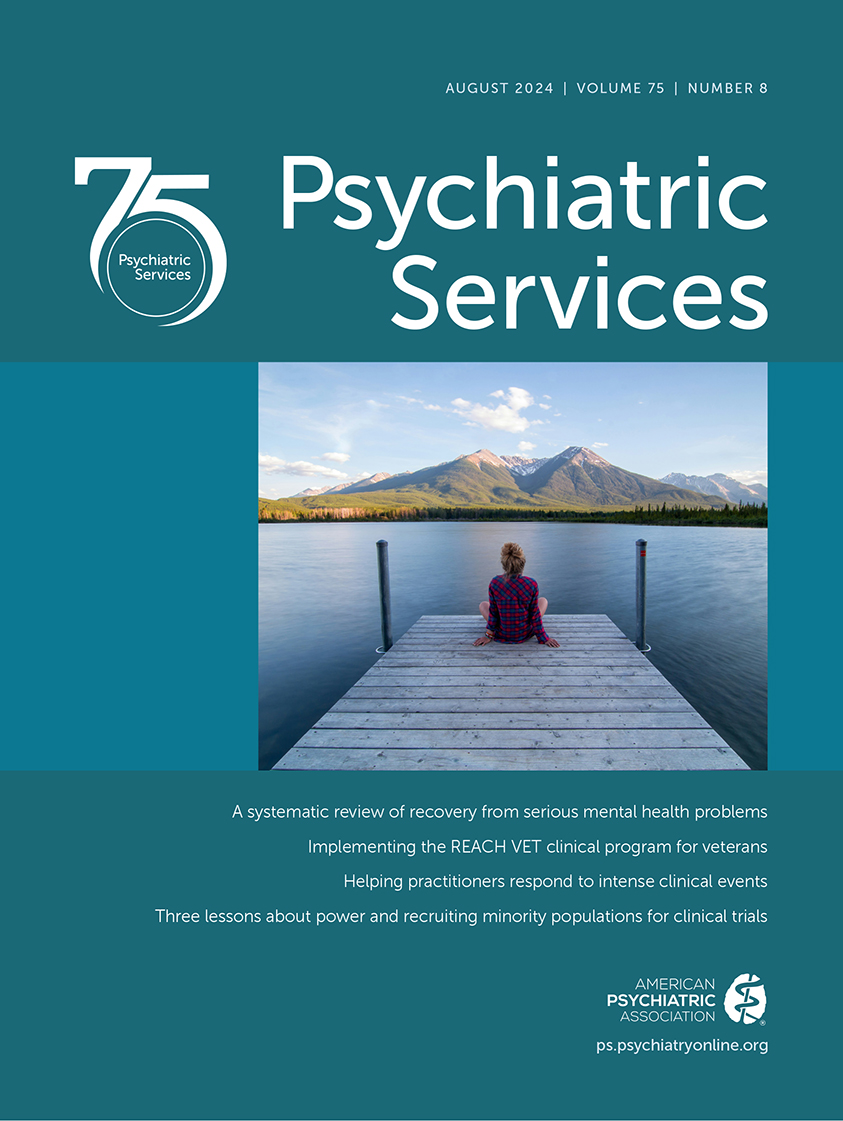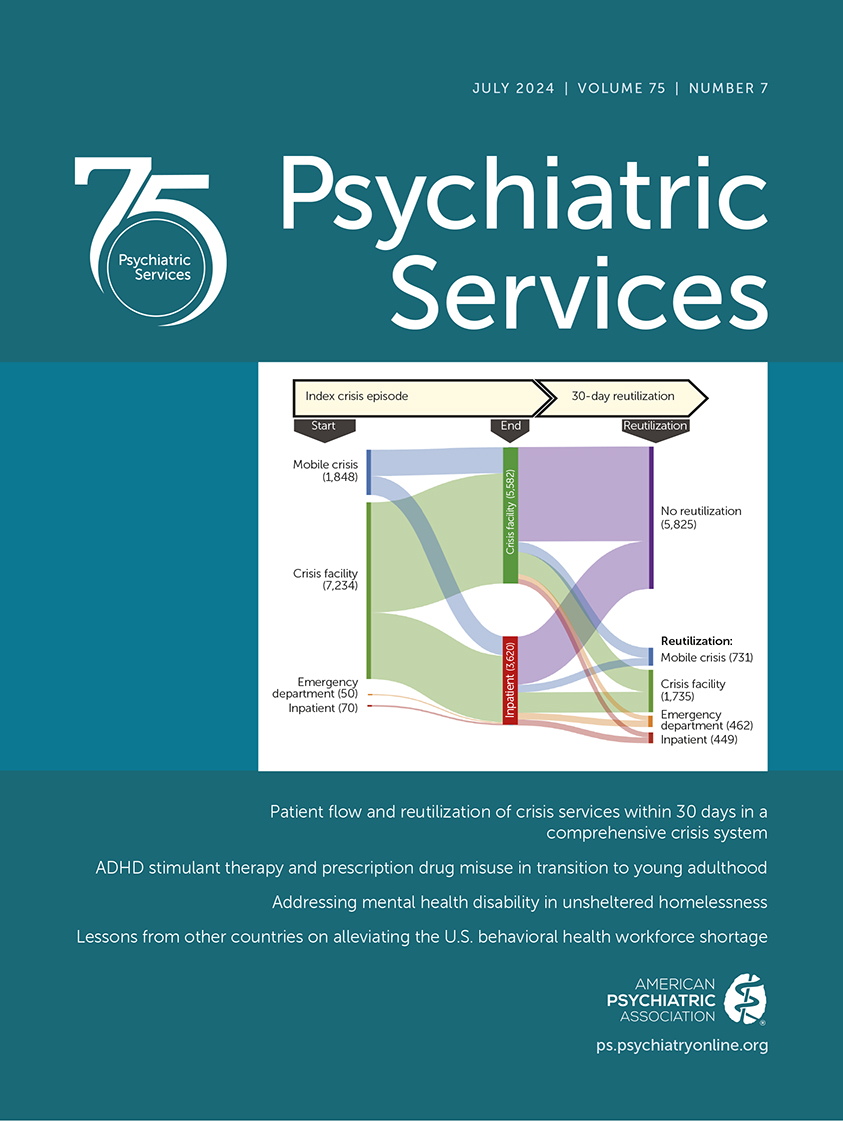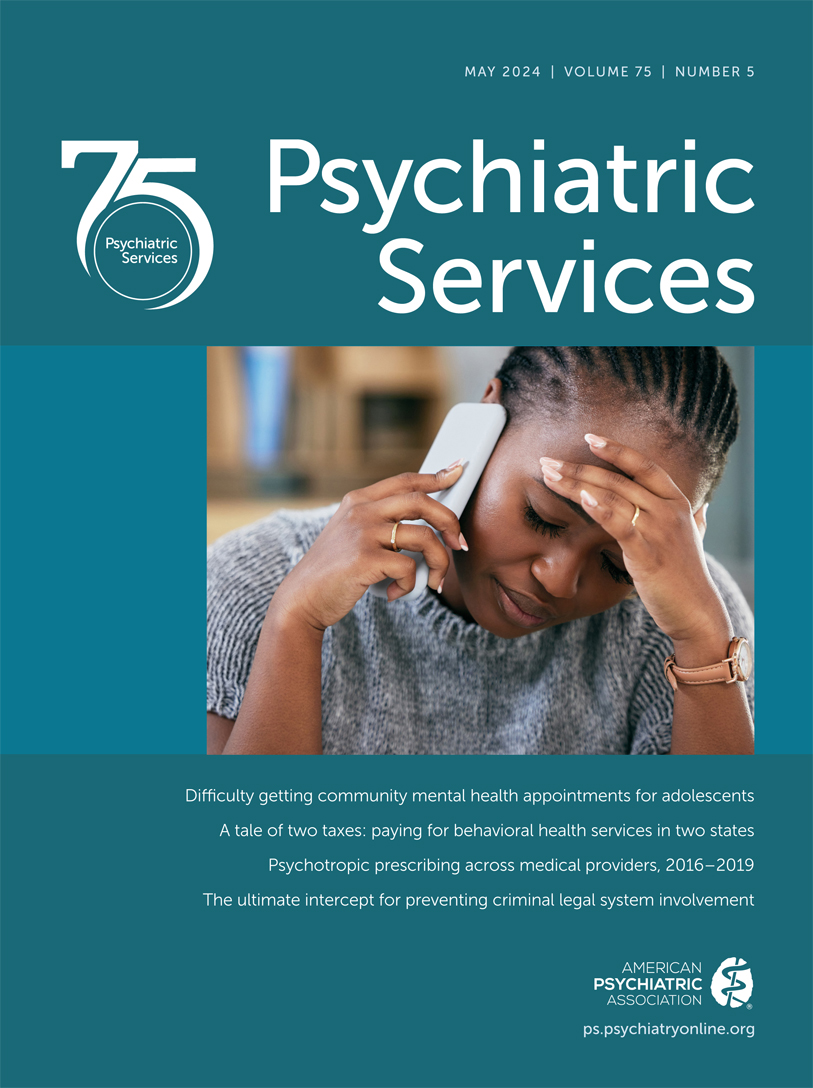Psychiatric Services
- Volume 30
- Number 11
- November 1979
Article
Publication date: 01 November 1979
Pages749–755There are approximately 25,000 to 30,000 psychiatrists in the United States, some 17,000 of whom are in actual clinical practice. As part of an overview of psychiatric manpower, the authors show the distribution of psychiatrists by state and present ...
https://doi.org/10.1176/ps.30.11.749Publication date: 01 November 1979
Pages756–760Contrary to popular opinion, there are now more psychiatrists in public service than ever before. Psychiatrists' contributions in this area have been masked by a decreasing growth in the total number of psychiatrists, the simultaneous expansion of other ...
https://doi.org/10.1176/ps.30.11.756Publication date: 01 November 1979
Pages760–762Psychiatrists who become administrators often find themselves in an unfamiliar world of planning, budget and cost control, labor relations, and mental health law. They discover that the physical and mental demands of leadership are great, their role makes ...
https://doi.org/10.1176/ps.30.11.760Publication date: 01 November 1979
Pages763–767The presence of psychiatrists in community mental health centers has diminished in recent years, especially in centers that are non-hospital-based and that are located in rural or disadvantaged urban settings. The decrease in psychiatric leadership in the ...
https://doi.org/10.1176/ps.30.11.763Publication date: 01 November 1979
Pages768–771A 1977 survey of public attitudes toward psychiatry found that the quality of institutional psychiatry was one of several factors associated with negative attitudes toward the field. Noting the shortage of psychiatrists in public institutions, the author ...
https://doi.org/10.1176/ps.30.11.768Publication date: 01 November 1979
Pages772–775The Southern Regional Education Board is carrying out a project to determine what factors influence the distribution of mental health professionals in the South and to develop recommendations for improving distribution. The project is concerned with four ...
https://doi.org/10.1176/ps.30.11.772Publication date: 01 November 1979
Pages775–777When the shortage of qualified psychiatrists and other physicians in Ohio's mental institutions reached the critical point in 1975, a number of measures were implemented to upgrade medical manpower. Salaries were increased, and the leadership of the ...
https://doi.org/10.1176/ps.30.11.775Publication date: 01 November 1979
Pages778–782The flight of psychiatrists from public mental health facilities must be halted if the sickest psychiatric patients—the severely and chronically mentally ill—are to receive the best care and treatment possible. The author emphasizes the need for ...
https://doi.org/10.1176/ps.30.11.778Publication date: 01 November 1979
Pages783–786The author compares the findings he made about the shortage of psychiatrists 20 years ago for the Joint Commission on Mental Illness and Health with the recent findings of the President's Commisszon on Mental Health. He concludes that not much has changed ...
https://doi.org/10.1176/ps.30.11.783Past Issues
View Issues Archive
Vol. 75 | No. 8

Vol. 75 | No. 7

Vol. 75 | No. 6
